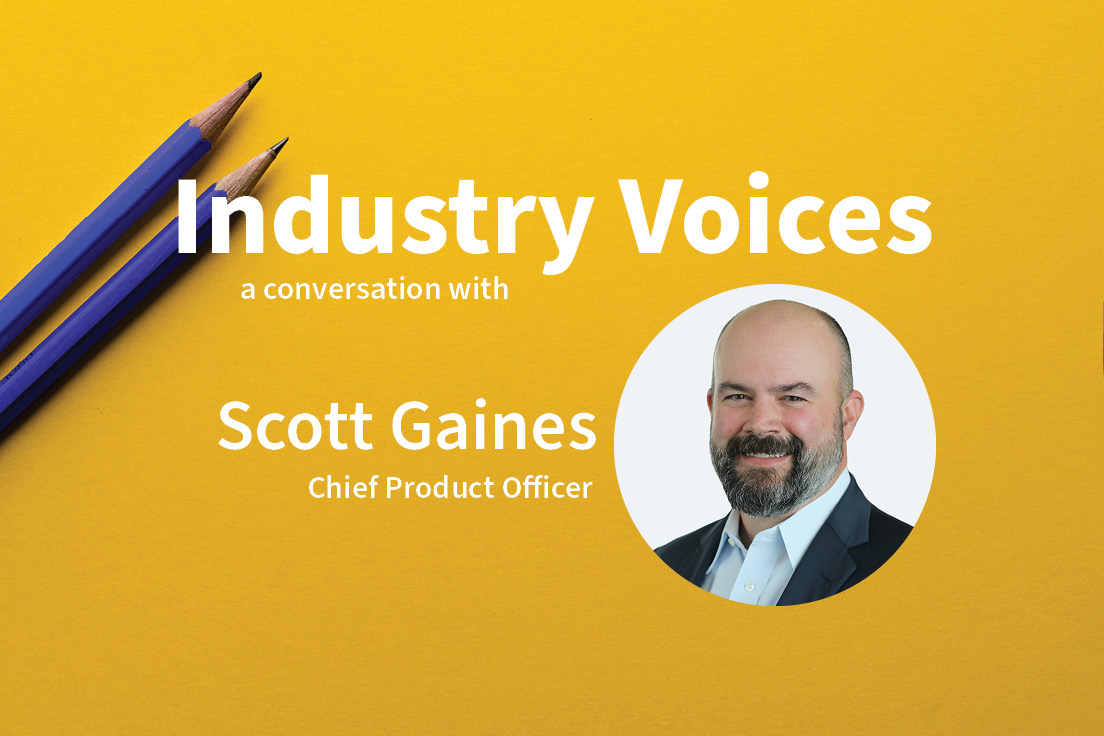Scott Gaines on the Power of Simulation-Guided Design to Handle Increasingly Complex Clinical Trials


As clinical trials become more complex, simulation-guided design approaches are crucial. For this edition of the Industry Voices series, Cytel’s Chief Product Officer & General Manager Scott Gaines discusses how simulation-guided design and Cytel’s Solara® clinical strategy platform have evolved clinical development strategy, enabling sponsors to select optimal designs even as clinical trials involve more study objectives and more sophisticated decision rules, and to better focus on strategic priorities while saving time and money.
Simulation-guided design has transformed the landscape of clinical development. How has this shaped strategy?
Clinical trials have grown increasingly complex. Innovative and adaptive designs allow sponsors to include more study objectives and more sophisticated decision rules, which significantly increases the number of variables to consider and in turn exponentially increases the number of trial models to evaluate. This requires powerful simulation-guided clinical study design and selection. And while the algorithms that power Cytel’s Solara clinical strategy platform are incredibly complex, the need for simulation is basic math: the number of trial models equals the number of relevant design variants (i.e., variables that can be controlled, such as endpoints and sample size) multiplied by the number of potential scenarios (i.e., unknowns that cannot be controlled, such as enrollment rate and treatment effect). Assessing risks and forecasting the performance of each modeled trial without simulation greatly limits the number of design options that can be considered and allows for a much less robust approach to pressure testing designs. In contrast, simulation-guided design provides a probabilistic risk assessment of what would be observed if each trial model were executed. These data allow teams to understand and quantify risk and assess potential strategic trade-offs.
Solara is the first clinical strategy platform. What does this mean for trial sponsors?
Strategy is both an input and an output of Solara. Meaning, Solara both requires and then enables a more strategic approach to trial design. The standard approach to design typically assumes many fixed constraints, such as power above 90% or an interim analysis timed at 50% of events, but Solara allows these to function instead as variables that can be evaluated relative to other statistical or operating characteristics of a trial. With this approach, a design with slightly less power may be the optimal choice, especially if there are clear strategic priorities such as speed or cost. Using Solara helps focus teams on strategic priorities and guard against the tendency to prematurely narrow options based on intuition or what has worked previously for similar trials. When this happens, some of the most innovative and optimal designs are often eliminated from consideration.
Ultimately, Solara allows you to quickly see an entire design space before eliminating options.
You mentioned that Solara also enables a more strategic approach to design, and I’ll add, creates a design space where clinicians, statisticians, and stakeholders could strategize together. Can you expand on this?
Yes, thank you for bringing us back to that. Solara saves time. Customers routinely share examples where the time spent on modeling, data generation, and analysis was reduced by over 90%, saving anywhere from 15 hours to more than a week’s time. Before Solara, most time was spent on modeling and data generation, leaving relatively little time for analysis. Solara flips this distribution. Overcoming time constraints provides a productivity boost that allows teams to focus more on strategic questions and further optimize designs. These benefits, which are realized early in the process, compound as study design and planning progresses, enabling faster decisions and a quicker start to the study.
Underlying the need to explore a more expansive design space and pressure test scenarios is the inherent complexity of drug development, where end-to-end success from first-in-human exploration to regulatory approval is just above 10% and the cost of failure represents 60% of total R&D spend. Clinical development teams are tasked with overcoming these odds by designing clinical trials that produce reliable, unbiased data to prove the safety and efficacy of therapeutics against constraints that include cost, time, and operational feasibility. Functional teams with deep expertise in biostatistics, medicine, clinical operations, and other disciplines must inform and assess these interdependent and sometimes conflicting goals. Without Solara, the various disciplines often work in parallel but independently to provide design input and evaluate potential trade-offs. Solara’s user-friendly interface and dynamic visualization offer a common language and workspace that enables more collaborative and data-driven discussions, providing a means to reconcile the various perspectives or prioritize them in a way justifiable to all.

For the techies among us, what role does computing power play in achieving this?
Computing power is the resource needed to run large simulations quickly. Solara was architected to leverage cloud computing, so it has efficient, on-demand network access to a pool of computing assets. The assets are hundreds of thousands of virtual CPUs. With this computing power, Solara can run 10,000 trial models, each simulated 5,000 times, in minutes.
So how many simulations can Solara do?
The power of Solara is less about the number of simulations that can be run, and more about the number of trials that can be modeled and simulated. Solara enables teams to review and evaluate incredibly large sets of models — say, 50 or 100 thousand — for relative robustness against strategic priorities. For this purpose, simulating each model 5,000 or 10,000 times each is typically sufficient. As you make strategic decisions and eliminate design options, you’ll progressively increase the number of simulations per model, narrowing and refining the accuracy of your design. For the most granularity or highest resolution, you may want to simulate a final design 100,000 times. However, this is a level of accuracy that may be needed for a protocol submission and is better suited for Cytel’s East®.
Can you expand on the relationship between Solara and East and their different roles in the design process?
East has been developed and refined over 25 years. The same scientific rigor that was applied to East is also present in Solara. In fact, many East algorithms, which are the gold standard of adaptive trial design, have been modified to support simulation-guided design in Solara. The difference between the two products is really about granularity and precision. East has great depth in design details. It offers a quick starting point to answer targeted questions using analytical methods at the beginning of design exploration. For a subset of designs, the complexity and number of variables are well suited to shift from analytical methods to simulation. In contrast to the depth of East, Solara provides breadth by enabling efficient exploration of an entire design space. Once the most robust design is found in Solara, East is used for further refinement. The two technologies together cover the end-to-end study design workflow. Solara enables divergent design thinking — open-mindedness about what’s possible and the discovery and consideration of many options, whereas East enables convergent thinking — narrowing to a well-defined design. This approach is so common and effective that we’re exploring ways to streamline the workflow across Solara and East.

Could you talk a little bit about the Pareto decision-making features of Solara? What would this enable sponsor leadership to do?
Pareto’s work is part of Solara in two ways. Most are familiar with the Pareto Principal, or 80-20 rule, which states that 80% of consequences come from 20% of results. The 80-20 rule is an apt description of the common approach to design selection for clinical trials. Teams usually only evaluate a small fraction of relevant designs. Given the time and effort needed when using traditional methods to find the most optimal design, and considering the diminishing returns of those efforts, following the 80-20 rule is viewed as sufficient. Solara changes the equation by dramatically decreasing the time and cost of exploring all options. The low cost of exploring what were previously considered diminishing returns can now produce designs that are optimized by 10% or more. As Phase II and III study costs exceed an estimated $70M and $310M, respectively, and often take many years to complete, design improvements of 10% are material. Using Solara as part of a standard process and removing the constraints of the 80-20 approach could eventually produce enough savings to fund an additional study.
Lesser known is the concept of Pareto Efficiency, also known as Pareto Optimality, which has long been used in economics to refer to the optimal allocation of resources with respect to a set of preference criteria. Pareto Efficiency is embedded within Solara. For those in technology or project disciplines, the “iron triangle” of resource, scope, and time constraints is a similar concept. Common knowledge suggests that you must “pick two.” Pareto Efficiency unlocks a different approach, presenting the most optimal combinations of all choices along a curve, known as the Pareto Frontier, and revealing precisely where it is impossible to improve one such consideration without making at least one other preference less optimal. With Solara, Pareto Efficiency can be used for the strategic selection of a clinical trial design, rapidly identifying which designs are most aligned with an organization’s business goals like speed-to-market, savings in development costs, and improving likelihood of success.
How familiar would someone have to be with adaptive designs or the Pareto Frontier to use Solara?
While statisticians familiar with adaptive designs must build the design space (e.g., providing the inputs in terms of range and increments), outputs like visualization and reporting are intended to be useful for statisticians and non-statisticians alike.
And what about open-source software? How does it factor into this space?
The benefits of open-source software are numerous and well known. It’s quick and easy to work with, flexible and leverages the power of community, to name a few. Open source is not universally the best option, and large-scale simulation is one of the exceptions. For example, the open-source languages most common in life sciences tend to be much less performant—by many orders of magnitude—than a language like C++. Quality issues with bespoke software also become more expensive when scale and performance are necessary. Our goal is to allow customers to take advantage of the power, performance, usability and dedicated support of Solara while adding extensibility options to give our customers the best of both worlds.
Lastly, how will this continue to transform the industry in your view?
In terms of technology investment, the Clinical Development industry is largely focused on improving the execution of clinical trials. But while considerable investment is increasing the efficiency and effectiveness of clinical trial execution, leveraging technology upstream of trial execution to improve trial design and enhance quantitative decision-making has been relatively sparse. Unfortunately, inefficiencies and other issues built into a study at the design phase flow through to execution, where they become more costly to address or cannot be addressed. Simulation-guided design is a better starting point for clinical trials, providing sponsors with a low-cost way to accomplish more with a fixed budget, accelerate speed to market and even avoid failure.
Read more from Perspectives on Enquiry & Evidence:
Sorry no results please clear the filters and try again

Industry Voices: Yannis Jemiai on Simulation-Guided Design and the Changing Landscape of Clinical Trial Strategy



